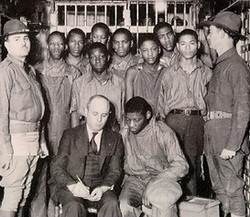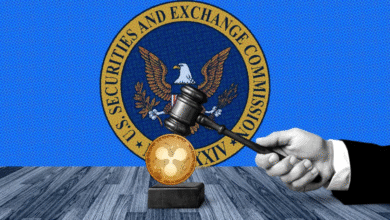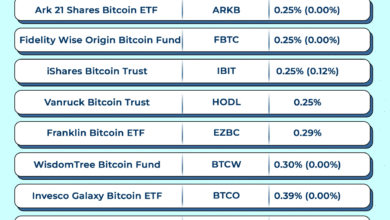Supreme Court Ruling Powell’s Position Remains Secure

The recent Supreme Court ruling on Jerome Powell has significant implications for the independence of the Federal Reserve. By affirming that the Fed’s leadership cannot be removed based on policy disagreements, this ruling effectively shields Powell from potential dismissal, even amidst ongoing tensions with President Trump. Criticism regarding the Fed’s interest rate decisions has been a hallmark of Trump’s presidency, wherein he publicly expressed dissatisfaction with Powell’s management. This decision ensures that Powell can fulfill his term through May 2026 without the constant threat of removal, upholding the principle of Federal Reserve independence. As the Trump administration grapples with these constraints, the ruling delineates the boundaries of presidential power regarding the Fed and its officials, marking a pivotal moment in the relationship between the White House and monetary policy.
The Supreme Court’s recent decision is a landmark affirmation of the Federal Reserve’s autonomy, directly influencing the role of its chair, Jerome Powell. This ruling effectively reinforces the notion that the head of the Fed operates free from undue political influence, a significant factor in the ongoing discourse surrounding the Trump administration’s monetary policies. With Trump often vocal about his dissatisfaction with Powell’s rate strategies, this legal landscape presents formidable challenges for the president should he wish to intervene. Additionally, the ruling has established clear guidelines for presidential authority over the Federal Reserve, suggesting that leadership decisions are insulated from partisan conflicts. Ultimately, this development not only highlights Powell’s security through 2026 but also serves as a critical reminder of the importance of maintaining an independent central banking system.
Understanding the Supreme Court Ruling Supporting Fed Chair Powell
The recent Supreme Court ruling has significant implications for the standing of Federal Reserve Chair Jerome Powell. This ruling reaffirms the independence of the Federal Reserve, which has become a crucial pillar in maintaining economic stability in the United States. By declaring the Federal Reserve a “uniquely structured, quasi-private entity,” the Court has effectively limited presidential powers concerning its leadership. This decision means that figures like Trump cannot dismiss Powell merely due to policy disagreement, reinforcing the idea that the Fed must operate free from political pressures.
Moreover, this Supreme Court decision highlights the foundational principle that the Federal Reserve’s role is to focus on long-term economic policies rather than short-term political gains. The judgment not only protects Powell’s current term but also secures the Fed’s ability to function effectively without the influence of partisan criticism. Given Trump’s ongoing commentary and dissatisfaction with Powell’s actions, this ruling serves as a crucial reminder of the separation of powers inherent in American governance.
Jerome Powell’s Independence Amidst Presidential Criticism
Amidst consistent public criticism from President Trump, Jerome Powell stands firm as the Federal Reserve Chair, bolstered by the recent Supreme Court ruling. Trump’s frustration with Powell has been vocalized on various platforms, notably on Truth Social, highlighting his discontent with Powell’s decision-making pace concerning interest rates. However, this criticism does not translate into power over Powell’s position, as the Supreme Court ruling effectively shields him from premature removal, emphasizing the Fed’s functional autonomy.
This independence is particularly relevant as financial policy decisions often require a level of insulation from the political cycle. Powell’s ability to chart a course for the Fed’s monetary policy—free from day-to-day political pressures—is deemed vital for the country’s economic health. Thus, despite Trump’s criticisms regarding Powell’s rate-setting decisions, the structure established by the Supreme Court aligns with the view that an independent Federal Reserve is essential to maintaining economic stability and public confidence.
The Challenges of Term Limits for Federal Reserve Chairs
The issue of term limits for Federal Reserve Chairs, particularly in the context of Powell’s current position, has emerged as a point of discussion among economists and politicians alike. While the President has the authority to appoint candidates to the Federal Reserve Board, the defined terms for these appointments create a layer of complexity. Powell’s term, which extends until May 2026, means that Trump has limited influence in shaping the Fed’s leadership before his own term ends. This situation is crucial, as ongoing debates about monetary policy demand consistency and expertise in leadership.
Furthermore, the limited vacancies available for appointments present a strategic challenge for Trump, who can only fill two board positions before 2029. These restrictions not only reflect the independence of the Federal Reserve but also underscore the importance of having a stable leadership in place during economic turbulence. The continuation of Powell’s tenure, free from immediate political shifts, enables the Federal Reserve to implement long-term strategies without the upheaval often caused by changes in administration.
Implications of Trump’s Fed Criticism and the Future of Monetary Policy
Trump’s ongoing criticism of Powell, particularly his comments on interest rates, raises questions about the future direction of U.S. monetary policy. As we delve into the relationship between the presidency and the Federal Reserve, it becomes increasingly evident how critical this dynamic is to both the financial markets and broader economic policies. Trump’s discontent with Powells’ cautious approach to adjusting rates reflects a more aggressive stance that often characterizes political discourse surrounding economic management.
Despite Trump’s attempts to exert influence over monetary policy, the Supreme Court ruling serves as a check on presidential power, reinforcing the need for coherent and stable policy decisions that are insulated from political whims. This balance is vital in ensuring that the Federal Reserve is free to make necessary adjustments to economic policy without being swayed by the immediate interests of political leaders. The enduring nature of this independence could essentially dictate the momentum of economic recovery and growth in the years to come.
The Repercussions of a Politicized Federal Reserve
The politicization of monetary policy poses significant risks, not only for Federal Reserve leadership but for the economic landscape as a whole. When politicians exert undue influence over the Fed’s decision-making processes, it strains the credibility and operational autonomy that is essential for effective economic governance. The Supreme Court ruling reinforces the premise that the Fed should function as an objective body prioritizing economic indicators over political affiliations.
In a climate where leaders seek to sway interest rates to fit their agendas, maintaining the integrity of the Federal Reserve becomes increasingly crucial. The potential consequences of failed monetary policy, arising from external pressures, could lead to economic instability and loss of public confidence in financial institutions. Powell’s term, secured by the judicial affirmation of the Fed’s independence, allows for a balanced approach to navigating intricate economic challenges without falling prey to partisan motivations.
The Future of the Federal Reserve Under Jerome Powell’s Leadership
Looking ahead, Jerome Powell’s leadership of the Federal Reserve will be pivotal in defining the agency’s role during critical economic junctures. With clear support from the Supreme Court ruling, Powell is well-positioned to advocate for policies that advance sound economic principles rather than adhere to immediate political pressures. This sense of stability is crucial as the nation grapples with inflationary concerns and transitions post-pandemic, with Powell at the helm offering the necessary experience and insight.
Moreover, Powell’s ongoing engagement with the market and economic stakeholders suggests a commitment to transparency and intentional governance. This resonates well in an environment where investor confidence plays a critical role in shaping economic outlooks. The combination of Powell’s strategic leadership and the Supreme Court’s reaffirmation of the Fed’s independence allows for a robust approach to monetary policy that ultimately seeks to foster a thriving economy despite varying political landscapes.
Trump’s Political Strategy vs. Fed Autonomy
The intersection of Trump’s political strategies and the autonomy of the Federal Reserve highlights ongoing tensions between elected officials and independent monetary authorities. Trump’s vocal criticism of Powell hints at an underlying strategy to reshape the policy landscape to align with his administration’s objectives. However, the Supreme Court ruling reiterates the critical need for the Fed to remain insulated from such tactics, reinforcing the central bank’s role in promoting economic stability devoid of partisan influence.
Navigating these complexities requires an understanding of how economic policy decisions are best made in a manner that prioritizes long-term outcomes over short-term political gains. While Trump may aim to influence Powell and Fed policies, the established framework ensures that monetary decisions are grounded in economic data and analyses rather than in responding to political pressures. This enduring autonomy is vital for ensuring that the Federal Reserve can effectively undertake its mandate to manage inflation and support sustainable economic growth.
Frequently Asked Questions
What does the Supreme Court ruling regarding Powell imply for Federal Reserve independence?
The Supreme Court ruling confirms the independence of the Federal Reserve, ensuring that Fed Chair Jerome Powell cannot be dismissed by the President over policy disagreements. This decision emphasizes the Fed’s structure as a quasi-private entity, reinforcing its autonomy until Powell’s term ends in May 2026.
How does the Supreme Court ruling affect Jerome Powell’s position as Fed Chair during Trump’s presidency?
The Supreme Court ruling protects Jerome Powell’s position against presidential influence, particularly from Donald Trump, who has been publicly critical of Powell’s decisions. The ruling limits Trump’s ability to remove Powell based simply on disagreement over monetary policy.
What are the implications of the Supreme Court Fed ruling for future Fed leaders?
The Supreme Court Fed ruling establishes that future Federal Reserve leaders, like Jerome Powell, will also enjoy protection from removal for policy differences. This sets a precedent for the Fed’s operational independence, affecting how future administrations may interact with Federal Reserve officials.
How has Trump criticized Powell in light of the Supreme Court ruling?
Despite the Supreme Court ruling that secures Jerome Powell’s position, President Trump has expressed his dissatisfaction with Powell’s rate-setting decisions, criticizing him on social media for alleged delays and poor decision-making. Trump’s comments reflect ongoing tensions between presidential expectations and Federal Reserve independence.
What is the significance of Powell’s term limits in relation to the Supreme Court ruling?
While the Supreme Court ruling assures Jerome Powell will serve his full term until May 2026, it also highlights the importance of term limits for Federal Reserve Chairs. This ruling suggests that future leaders will similarly be safeguarded from arbitrary removal, maintaining the Fed’s stability and credibility.
How does the Supreme Court ruling on Powell impact Trump’s control over the Federal Reserve?
The Supreme Court ruling limits Trump’s control over the Federal Reserve, as he can only appoint to two vacancies on the Fed board by the end of his term in 2029. This restricts his ability to reshape the Fed’s leadership in response to his criticisms of Powell’s monetary policies.
| Key Points |
|---|
| U.S. Federal Reserve Chair Jerome Powell’s position is protected by a recent Supreme Court ruling that reinforces the independence of the Federal Reserve. |
| The ruling limits the President’s authority to remove Fed officials for policy disagreements, ensuring Powell can finish his term until May 2026. |
| President Donald Trump has publicly criticized Powell for his decision-making and interest rate policies but faces limitations in influencing Fed leadership. |
| The Supreme Court characterized the Federal Reserve as a “uniquely structured, quasi-private entity.” |
| Trump may only have the opportunity to fill two board vacancies, limiting his power over Federal Reserve appointments before his term ends in 2029. |
Summary
The Supreme Court ruling Powell has reinforced the independence of the Federal Reserve, ensuring that Chair Jerome Powell is safeguarded from removal during his term until May 2026. Despite President Trump’s criticisms and desire for policy changes, he is limited in his ability to influence Fed leadership due to the Court’s decision, which prevents the dismissal of governors for differing policy views. This ruling confirms the Fed’s unique structure and autonomy in governing monetary policy.




